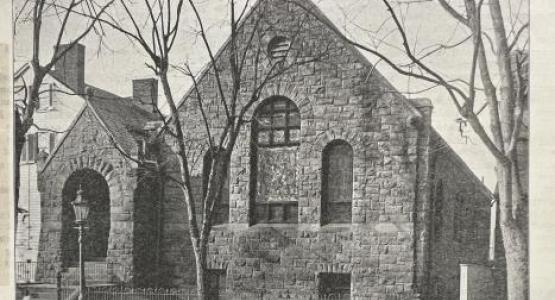
First Adventist Church in Washington, D.C. | 810 Shepherd St., NW, Washington, D.C.
First Adventist Church in Washington, D.C. | 810 Shepherd St., NW, Washington, D.C.
Seventh-day Adventism came to Washington, D.C., in 1886. Three years later, the first Adventist congregation in the city was formed. Despite national racial conditions at the time, this church was integrated and socially progressive from the start. Rosetta Sprague, Frederick Douglas’ daughter, was a notable active member. Around the turn of the century, however, during the Reconstruction era, this integrated Adventist congregation faced increasing pressure from both national politics and the General Conference to segregate.
Considering the headquarters’ geographical position was something of a border state, racial prejudice from the South infiltrated the area, contributing to the push for segregation.
“That’s partly what happened; it’s partly bad theology,” says Campbell. “The early 20th century embraced fundamentalism, which is very hierarchical in its outlook. You see the eclipsing of women in the church. [There were many women leaders before this time period, for example.] You see it outside of Adventism, you see it within Adventism. You also see a strong push toward segregation. A lot of fundamentalists were preaching about a Black and white Advent, and what had to be some of the scariest stuff I’ve run across in Adventist history, you see some Adventists that are beginning to preach about a Black and white heaven, as well.”
After initial resistance to segregation, many white members—who were well funded by the General Conference, says Campbell—finally broke off to form a segregated congregation under J.S. Washburn in 1902. The remaining members of the original congregation called themselves the First Church.
A historical marker identifies the spot of the first congregation today. In 1956, the predominantly Black First Church relocated to the former Beth Shalom synagogue, where they still meet today.
Read about the other church that resulted from the split here.
The Columbia Union Conference—which covers the Mid-Atlantic region of the United States—is home to many locations where people of the Seventh-day Adventist faith made (and continue to make) history. But how did the greater Washington, D.C., area become a church hub in the first place? And where can one find impactful, lesser-known historic sites within the Columbia Union territory?
Take a road trip with historians Michael Campbell, North American Division director of Archives, Statistics, and Research, and Phillip Warfield, a Ph.D. candidate studying United States 20th Century History at Howard University (D.C.), as they introduce—or for some, reintroduce—several interesting and exciting Adventist spots you and your family can visit this summer. So, grab your hiking boots and sunscreen because we’re off!
Find more details and history in our online articles!
- Ellen White Stayed Here in 1905 (Washington, D.C.)
- George Washington Likely Stayed Here (Pine Forge, Pa.)
- Where the Great Controversy Vision Took Place (Bowling Green, Ohio)
- First Adventist Church in Washington, D.C.
- What Was The People's Church? (Washington, D.C.)
- Where Is the Oldest Adventist Building Still in Use? (Ford, Va.)
- Where the Great Controversy Vision Took Place (Bowling Green, Ohio)
- What Happened to Lucy Byard (And Why is it Important to Adventism?)
- Which Adventists are Buried in Rock Creek Cemetery? (Washington, D.C.)
- Why Did the General Conference Move to Takoma Park?

Add new comment